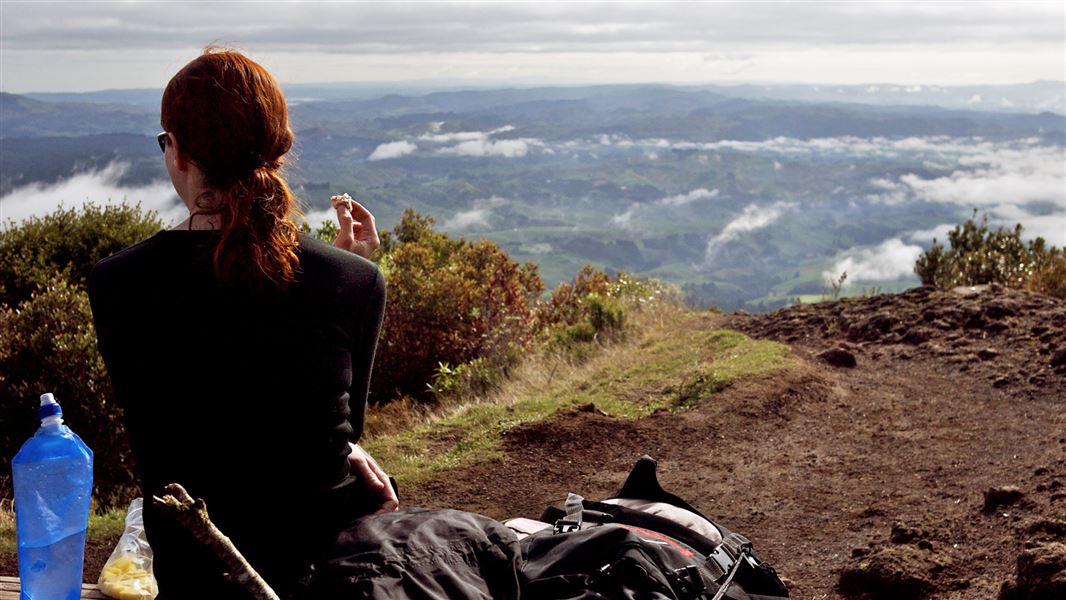Pirongia Mountain is the largest area of native forest remaining close to Hamilton and is of considerable conservation value due to the variety of plant life and wildlife habitats available.
Rimu and tōtara are found at lower altitudes along with tawa and tree ferns. Higher up, the forest changes; hardy plants like kāmahi, tāwari, horopito and mountain neinei grow on exposed ridges and near the summit, thick mats of mountain flax, coprosmas and ferns are common.
Northern rātā and kohekohe are still present in the canopy but are a favourite food of possums. A special feature is the 700-year-old pāhautea trees that grow near Pahautea Hut.
Pest control programmes undertaken by DOC and the community are in place to help save these and other vulnerable species, including wildlife. Grey warblers, fantails, tomtits, pipits, harriers, kingfishers, New Zealand falcons, kererū, tūī, bellbirds and whiteheads can still be seen, although kiwi and kōkako have disappeared from the area. Several species of native fish and a huge variety of aquatic invertebrates are found in the mountain streams.
Dactylanthus taylorii/Pua ō te reinga is a rare and endangered plant found on the ridges of Mt Pirongia. It is New Zealand’s only completely parasitic flowering plant and grows partially underground. The short-tailed bat, also endangered, pollinates the flowers, attracted by the plant’s sweetsmelling nectar. Many of the plants are caged to protect them from possums.

